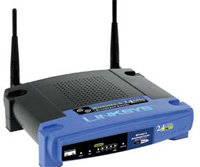Difference Between Wireless G and N

The advancement of wireless technology has opened new doors for the people who truly require mobility. You can easily access the network without dealing with the tangle of wires that is necessary for usual wired connection. The absence of wires also allows you to move from one room to another, especially for laptops and PDA users. The popularity of Wi-Fi is very apparent especially in coffee shops and airports where they provide free wi-fi access.
The current standard that is in use today is the 802.11g. This standard provides up to 54Mb/sec raw data speed. That speed has proven to be very sufficient since the usual purpose of connecting via Wi-Fi is to connect to the internet. But development cannot be stopped.Thus the members of the Wi-Fi alliance have pushed for the standardization of Wi-Fi 802.11n. This would provide a very large raw data rate of 600Mb/sec, which is a great improvement over the 802.11g standard.
Another astonishing feature of the 802.11n standard is the use of multiple antennas as an aid in rebuilding the signal; Tthis feature is called MIMO (Multiple Input Multiple Output). Simply put, the antennas capture the multi path signals that arrive much later than the LOS (Line of Sight) signal. These signals provide the hardware with the ability to properly recover the original signal. The use of three antennas also has a drawback since it also requires three radios to run. This translates into a much higher cost of the 802.11n routers compared to others.
Most technologies nowadays have backwards compatibility to allow devices that were built before them to still function with them. In this aspect, 802.11n also has another improvement.Â
The products that are out now are just based on drafts of 802.11n standard, because the actual standard hasn’t been finalized yet.
Technology is always evolving as long as there is a demand for it. The evolution of the Wi-Fi standard from 802.11g to 802.11n is a testament to this. With the new standard providing much better service than its predecessor along with a few nifty upgrades that make it more reliable and easier to use. Despite all the features that 802.11n has offered, it too will become obsolete in due time; giving way to yet another standard that is faster, better, and stronger.
- Difference Between Sony Cybershot S Series and W Series - December 22, 2012
- Difference Between Samsung Galaxy S3 and iPhone 5 - December 21, 2012
- Difference Between Samsung Galaxy S2 (Galaxy S II) and Galaxy S 4G - December 20, 2012
Search DifferenceBetween.net :
 Email This Post
: If you like this article or our site. Please spread the word. Share it with your friends/family.
Email This Post
: If you like this article or our site. Please spread the word. Share it with your friends/family.


im studying this
Thanks for the differentiation. I’m also interested in the health aspect of wireless. Which of the technology g or N is health wise better?
im going to answer that question for you. since i have been using an N network i have been feeling very ill with rigidity all over my body and not being able to think clear. i am one of those who are electromagnetic sensible. i get the same when it is bad weather and lightning strikes.
so without noticing anything for the past year, i found out that when i switched off my wireless i felt relief, so i began investigating who or what.
being able to not find any information on the internet, i began tweaking the controls of my wireless router, and found out that a G network installation reduces my sickness.
it does not completely go away, but it goes away enough for me to be able to focus again.
this is most probably explained by the fact that G network utilizes only one wave and not multiple waves, and the fact that the speed of the G wave is half than what is N.
so tweak your router to G status if you have an N router. Or go out and buy a simple G router.
i hope i have answered your question!